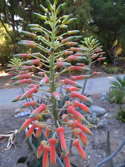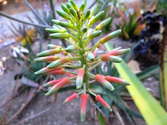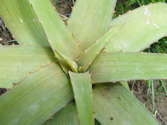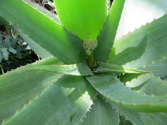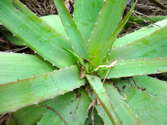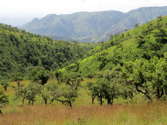This species was described just five years ago in the Cactus and Succulent Journal 83 (6):270-274, Nov-Dec, 2011. It hails from Uganda, a country not usually associated with succulents but home to a number of species including this endemic. Like many of the more tropical aloes, this plant is simple in appearance, forming usually solitary rosettes of unspotted green leaves, though in bright, xeric conditions these can take on a brownish cast. The leaves of mature plants lack the white spots of “maculate” aloes (like the closely related A. lateritia), making it, paradoxically, an immaculate maculate. The specific epithet was conceived by Dioli to honor the Ik people indigenous to this area of northeastern Uganda on the escarpment overlooking the Kenyan plain to the east, south of Kidepo National Park. We offer HBG 124740, plants from seed collected at the type locality in the Karamoja region, Kaabong District, northeast Uganda. At this altitude on the escarpment, ca. 1900 m, there is considerably more precipitation than on the dry plains below and, thus, the aloe often grows in dense Hyparrhenia grass in Combretum/Acacia woodland. $10.
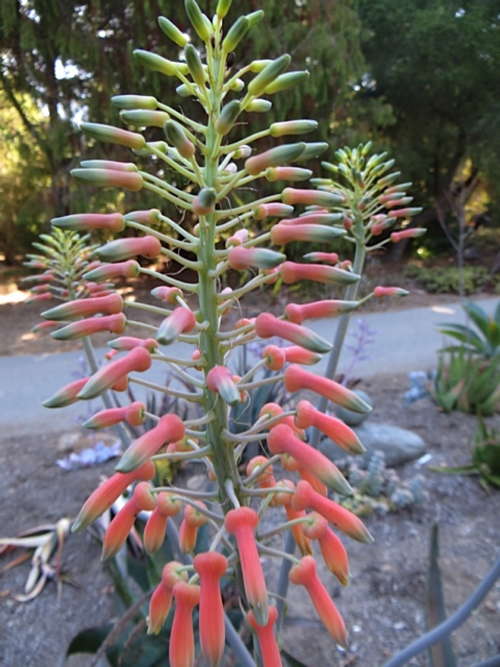
Published in the Cactus and Succulent Journal, Vol. 88 (3), May-June, 2016
